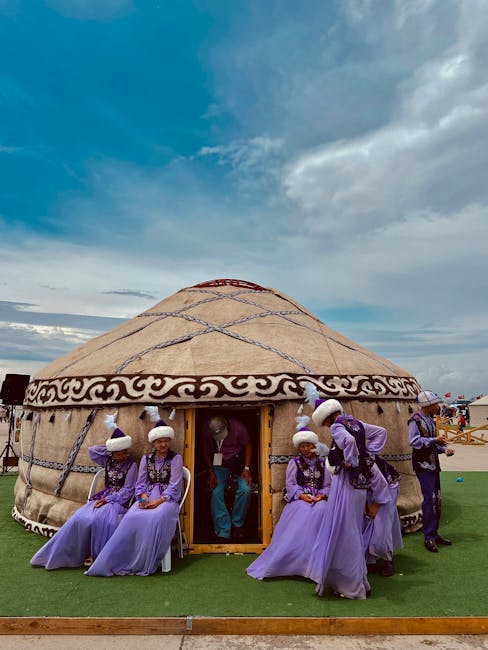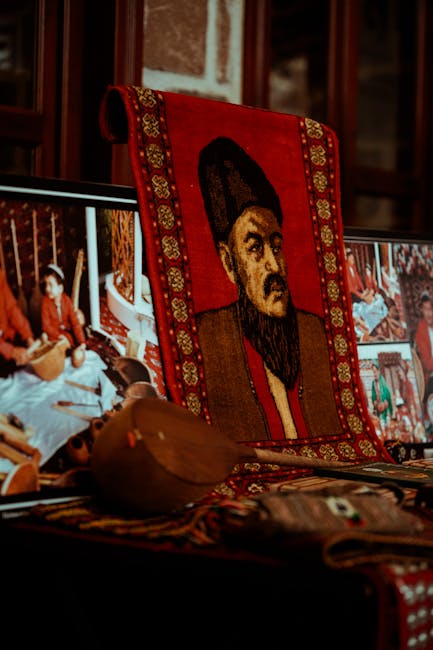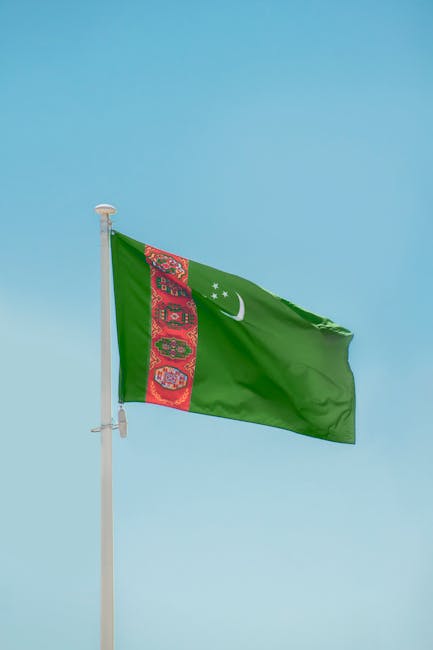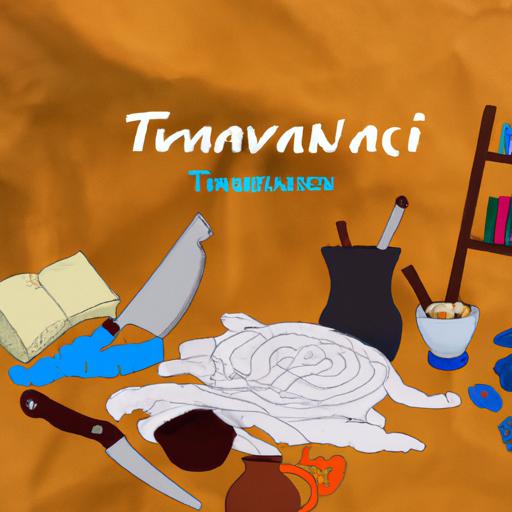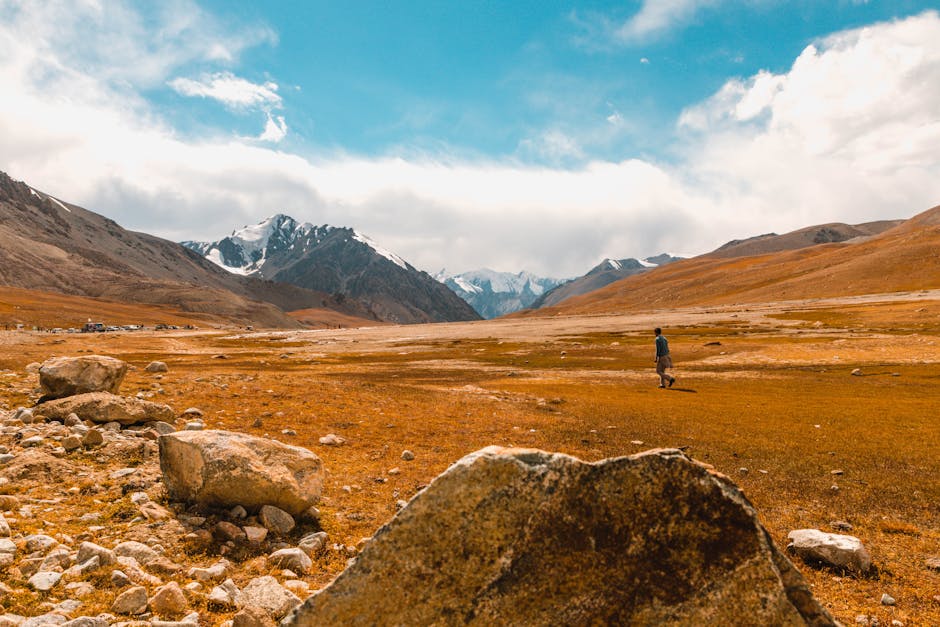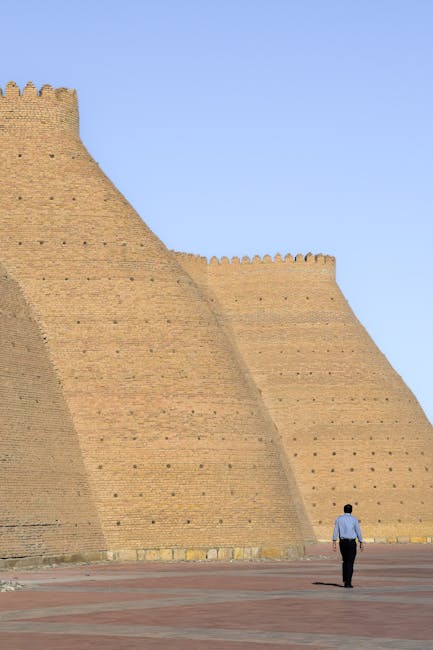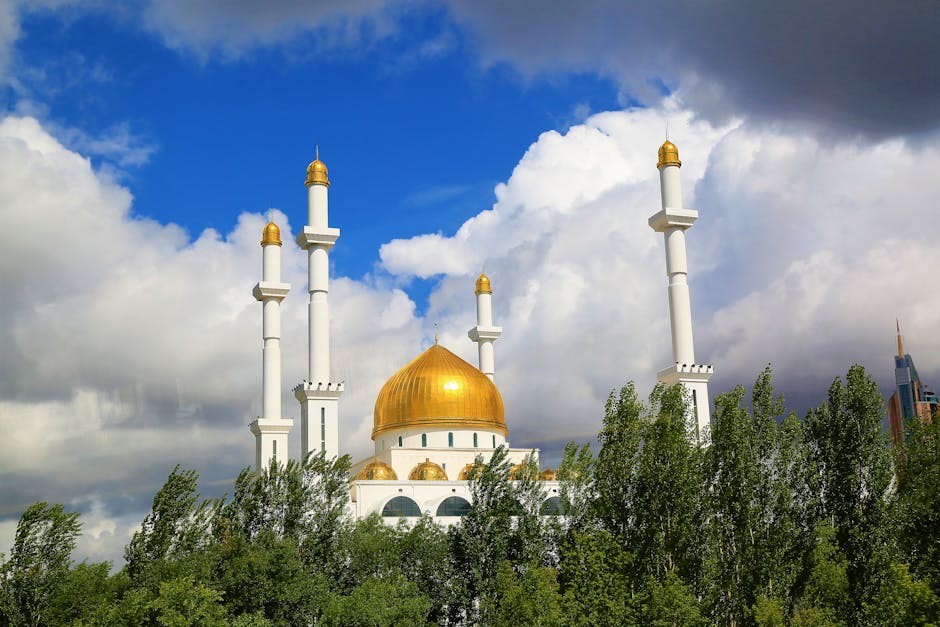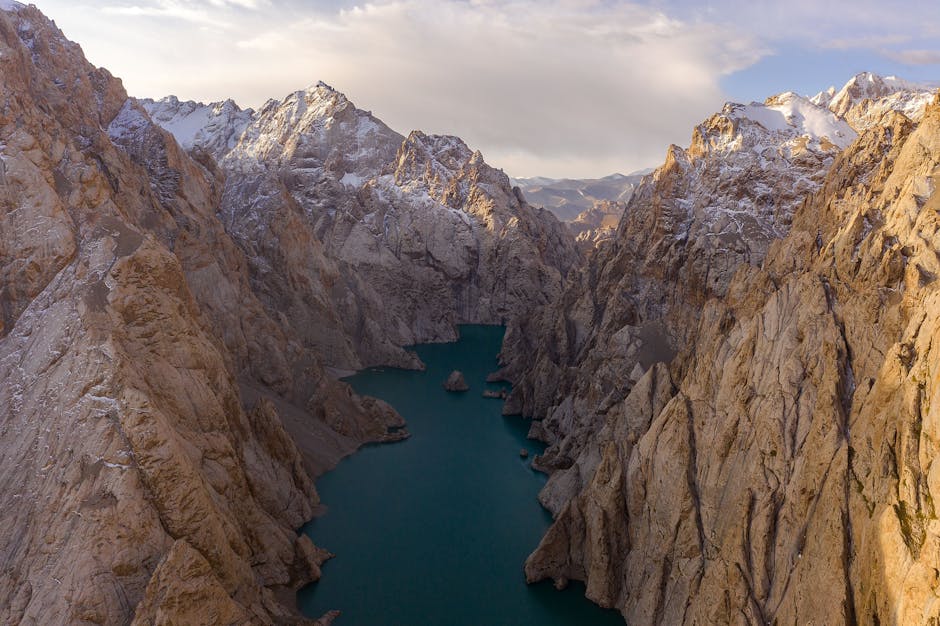Turkmenistan
Overview
Turkmenistan, a vibrant country located in Central Asia, is a fascinating blend of ancient and modern culture. Known for its stunning Islamic architecture, rich history, and hospitality, it is a unique place to explore. The capital city, Ashgabat, is a testament to Turkmenistan's modernity, filled with grand marble structures and gold monuments. The country's unique cultural identity is reflected in its traditional music, dance, and cuisine, with the national dish 'plov' being a must-try. Turkmenistan's rich history is evident in its UNESCO World Heritage Sites, like the ancient city of Merv and the Parthian Fortresses of Nisa.
The best time to visit Turkmenistan is during the spring months of April and May, or during the autumn months of September and October. During these periods, the weather is mild and comfortable, suitable for outdoor activities. Turkmenistan's natural beauty shines through in attractions like the Yangykala Canyon, the Door to Hell gas crater, and the Karakum Desert. These sites offer various activities such as hiking, camping, and photography. Cultural enthusiasts can attend the Nowruz Festival in March, a vibrant celebration of the Turkmen New Year filled with music, dance, and traditional foods.
Before visiting Turkmenistan, travellers should familiarise themselves with the visa regulations, as the country has strict entry requirements. A letter of invitation is usually required to apply for a visa. It's also important to respect local customs and traditions. Dress modestly, particularly when visiting religious sites. While the country is generally safe, it's advisable to have comprehensive travel insurance. Lastly, Turkmenistan is a cash-based society, so ensure you have enough local currency (Manat) on hand, as credit cards are not widely accepted. With careful preparation, your trip to Turkmenistan can be a memorable adventure filled with rich cultural experiences and stunning natural landscapes.
A Glimpse into the Past
Turkmenistan, a country located in Central Asia, boasts a rich tapestry of history that weaves together the traditions of nomadic tribes, the influence of great empires, and the legacy of the Silk Road. The nation is characterized by its vast deserts, ancient cities, and a culture steeped in the heritage of the Turkmen people. Exploring Turkmenistan offers a unique glimpse into a world where the past and present coexist in remarkable ways.
Ancient Heritage and the Silk Road
The history of Turkmenistan dates back thousands of years, with archaeological sites such as Merv and Nisa showcasing its significance as a center of trade and culture. Merv, once one of the largest cities in the world, served as a pivotal hub along the Silk Road, facilitating trade between East and West. The remnants of ancient architecture, including the ruins of mosques and fortifications, reflect the city's past glory and its role in the spread of knowledge and commerce.
Nisa, a UNESCO World Heritage Site, was the capital of the Parthian Empire and is home to impressive fortifications and temples. Visitors can explore the archaeological remains, which offer insights into the life and culture of the Parthians, known for their skilled horsemen and formidable warriors.
The Influence of Empires
Throughout its history, Turkmenistan has been influenced by various empires, including the Persian Empire, Alexander the Great’s conquests, and the Seljuk Turks. The region's strategic location made it a critical point in the power struggles of these empires. The blend of cultures has left an indelible mark on Turkmen society, evident in the architecture, language, and customs observed today.
The Seljuk period is particularly notable for the architectural marvels that emerged, with buildings exhibiting intricate tile work and domes. Tourists can marvel at these structures in cities like Mary and the old town of Gokdepe, where the legacy of the Seljuk Turks is preserved in the stunning designs and craftsmanship of the era.
The Era of the Khans
As the centuries progressed, the region witnessed the rise of the Turkmen khans, who led various tribes and established principalities. The Turkmen people are renowned for their nomadic lifestyle, and their traditions have been preserved through music, carpet weaving, and horsemanship. The famous Turkmen carpets, known for their intricate designs and vibrant colors, are a testament to the artisanship of the Turkmen people.
Travelers can experience the unique cultural heritage of the Turkmen people by visiting local markets, where traditional crafts and goods are sold. Engaging with the locals provides an opportunity to learn about their customs, hospitality, and the stories that have shaped their identity.
Colonial Legacy
In the 19th century, Turkmenistan came under Russian control, leading to significant changes in its social and political landscape. The Russian Empire aimed to impose administrative systems and integrate the region into its economic framework. The impact of this colonization is still felt today, as many cities exhibit a blend of Russian and Central Asian architecture.
The capital city, Ashgabat, reflects this historical transition with its wide boulevards and Soviet-era structures. Visitors can explore the city's monuments, including the impressive Neutrality Monument and the grand Arch of Neutrality, which symbolize the country's declaration of neutrality in international affairs.
Independence and Modern Era
Turkmenistan gained independence from the Soviet Union in 1991, marking a new chapter in its history. The first president, Saparmurat Niyazov, implemented a cult of personality that influenced all aspects of life. His policies, including the promotion of the Turkmen language and culture, aimed to foster national pride. The capital city underwent extensive reconstruction, resulting in a modern urban landscape adorned with grandiose buildings and monuments.
Today, the second president, Gurbanguly Berdymukhamedov, continues to build upon Niyazov's legacy, focusing on economic development and international relations. While the government maintains tight control over political life, the country has opened its doors to tourism, allowing travelers to explore its fascinating history and culture.
Natural Wonders and Cultural Sites
Turkmenistan is not only rich in history but also boasts stunning natural landscapes. The Karakum Desert covers a significant portion of the country, offering a stark yet beautiful environment. One of the most notable natural wonders is the Darvaza Gas Crater, also known as the "Door to Hell." This fiery pit has been burning for decades and has become a popular destination for adventurous travelers looking to witness its surreal glow against the night sky.
In addition to natural attractions, Turkmenistan is home to several cultural sites that highlight its historical significance. The ancient city of Konye-Urgench, another UNESCO World Heritage Site, features impressive mausoleums and minarets that showcase the architectural brilliance of the medieval period. The Turkmenbashi Ruhy Mosque, one of the largest mosques in Central Asia, is a modern masterpiece that reflects the country’s commitment to preserving its Islamic heritage.
Experiencing Turkmen Culture
Traveling through Turkmenistan provides a unique opportunity to immerse oneself in the local culture. Traditional celebrations, known as gurban, are occasions for communal gatherings, featuring music, dance, and traditional foods. Visitors can partake in the festivities and gain a deeper understanding of the Turkmen way of life.
Moreover, the YomudGoklen tribes, known for their distinctive customs and practices, offer travelers a chance to witness traditional nomadic lifestyles. Engaging with these communities enriches the travel experience and fosters a genuine appreciation for the cultural diversity within Turkmenistan.
Conclusion
In conclusion, Turkmenistan's history is a fascinating blend of ancient civilizations, empires, and modern developments. With its rich cultural heritage, stunning landscapes, and unique traditions, the country offers travelers an unparalleled journey through time. Exploring Turkmenistan is not just a visit to a destination; it is an opportunity to connect with a vibrant history that continues to shape the identity of its people. Whether wandering through ancient ruins, marveling at architectural wonders, or engaging with the local culture, travelers will find themselves captivated by the stories that echo through this remarkable land.
Top cities for tourists in Turkmenistan
Discover the Famous Cities That Might Captivate Your Interests
Must-Try Foods You Can't Afford to Miss
Indulge in a Variety of Fantastic Foods During Your Stay in Turkmenistan
May Be Your Next Destinations
People often choose these countries as their next destination


